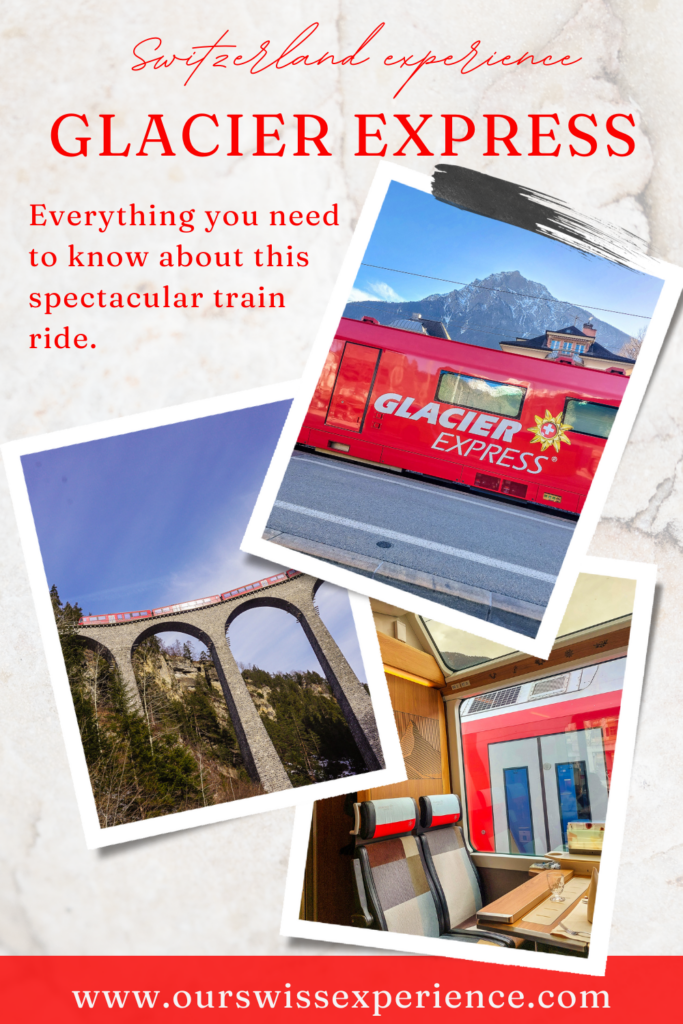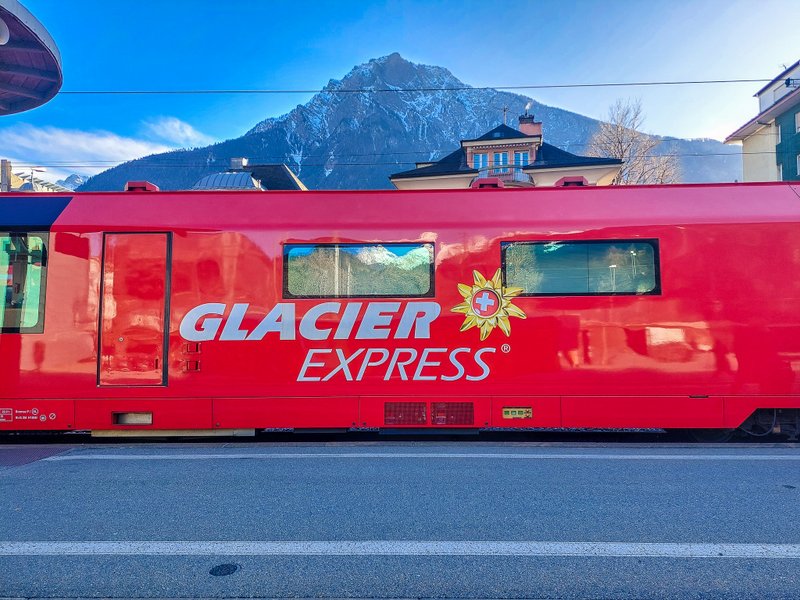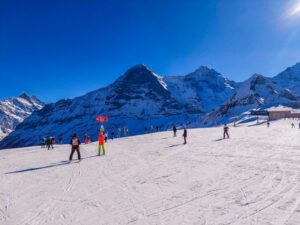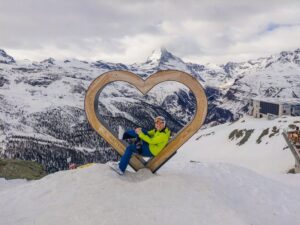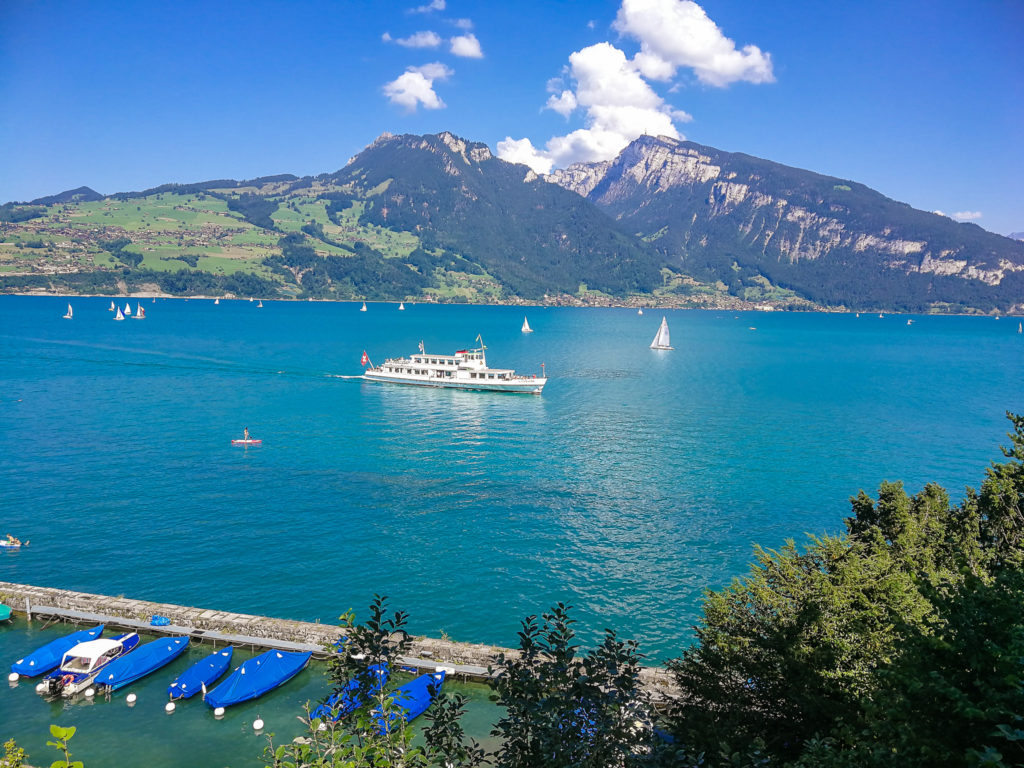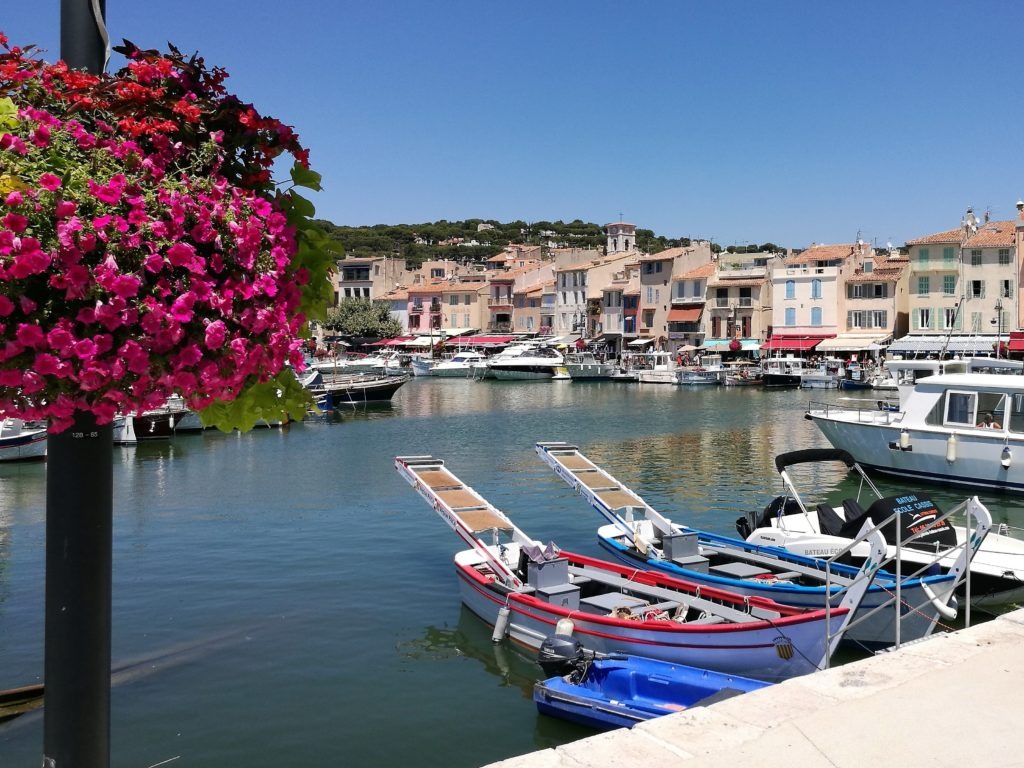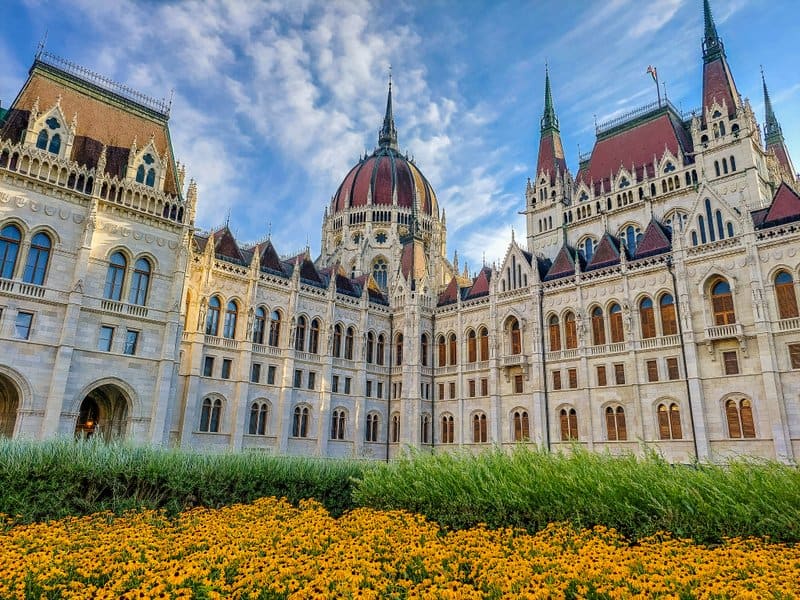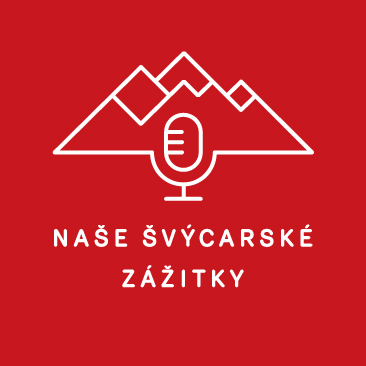I consider it a bit of a shame that we have lived in Switzerland for almost ten years, and I have never experienced a ride on the Glacier Express – the slowest express train in the world. I decided I needed to fix this as soon as possible, especially since I create customized itineraries for my clients. I need to know what I’m planning for them and what kind of experience they’re in for.
Here are a few facts about Glacier Express to start with
The first Glacier Express train departed from Zermatt to St. Moritz on 25 June 1930, and the journey took 11 hours. Today it takes 8 hours to travel the entire route. The entire route from Zermatt to St. Moritz or Davos takes you over 291 bridges and through 91 tunnels and passes through three cantons: Graubünden, Uri, and Valais/Wallis. The route’s highest point is the Oberalppass, at 2,033 meters above sea level. The train passes through two UNESCO World Heritage Sites: in the section from St. Moritz to Thusis, it passes over the historic Albula railway line, and in Wallis, it passes through the Jungfrau-Aletsch area.
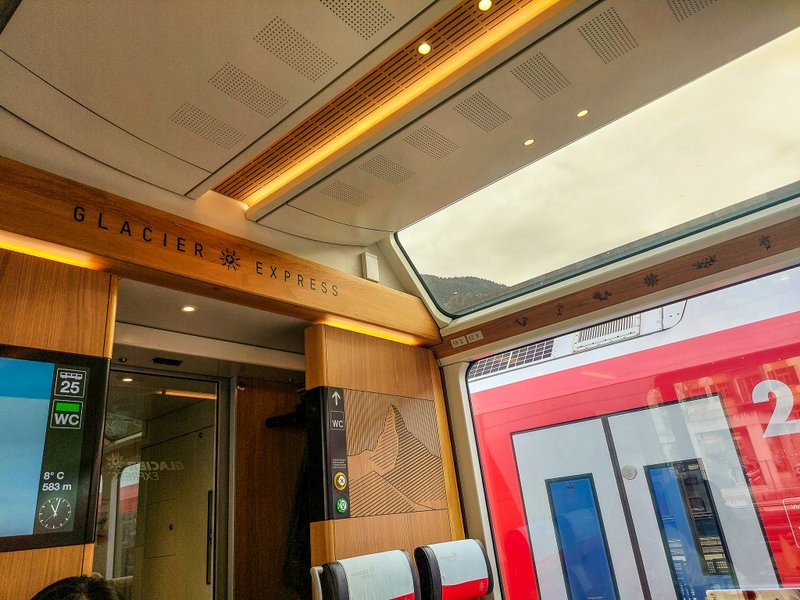
How to book a Glacier Express ticket
Order tickets directly at the source, i.e., on the Glacier Express website, is best. Come with me to create your ticket order step by step. In the pictures below, you can see the home page; then, I chose the Glacier Express Classic option. Do you want to experience the Excellence Class? Here’s a video of what this luxury ride looks like.
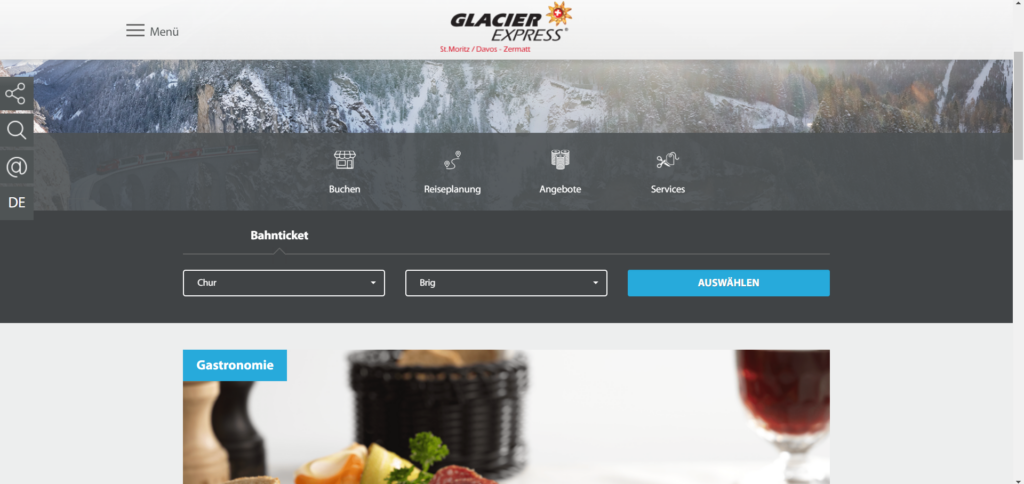
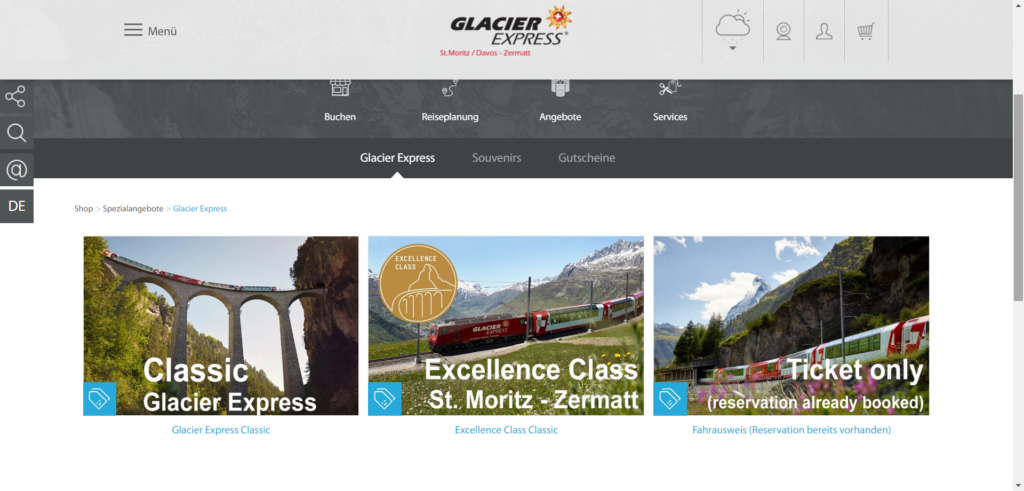
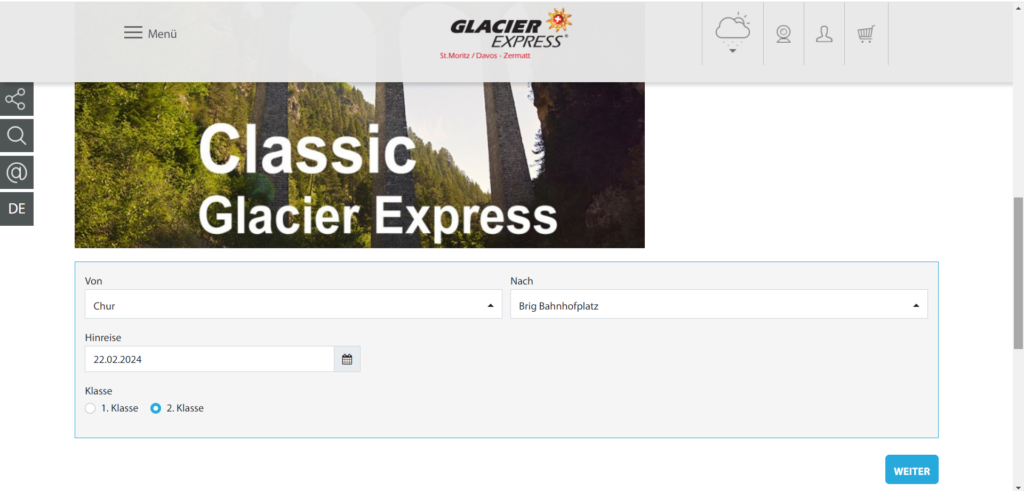
To illustrate, I selected a date in 3 weeks and clicked on Weiter/next. The page immediately showed me the available connections for that day. The two green dots mean more seats are available on the second connection than on the first one. So, I selected the second connection, and the system showed me the available seats. The downside is that you don’t know if you’re going in the forward or reverse direction, as it says in the purple box. So if, for example, you don’t feel comfortable going in the opposite direction, you’re out of luck.
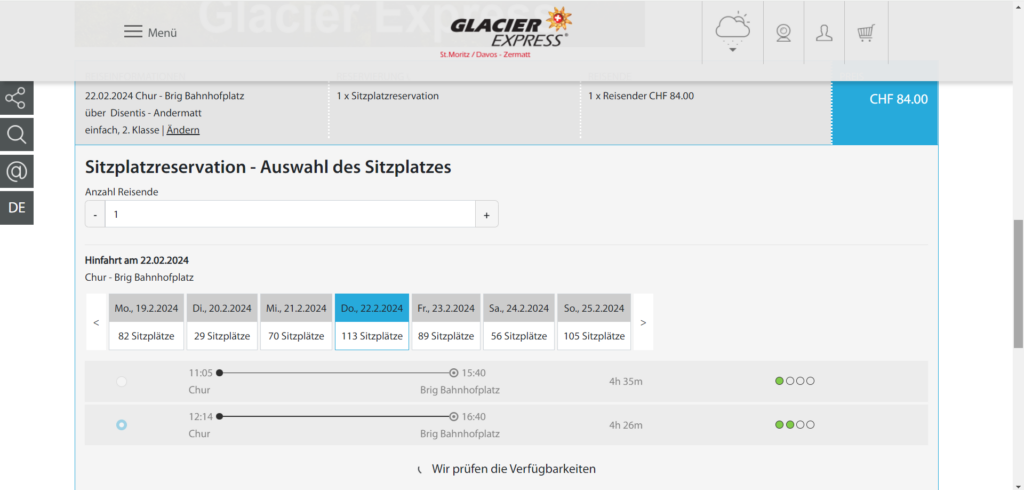
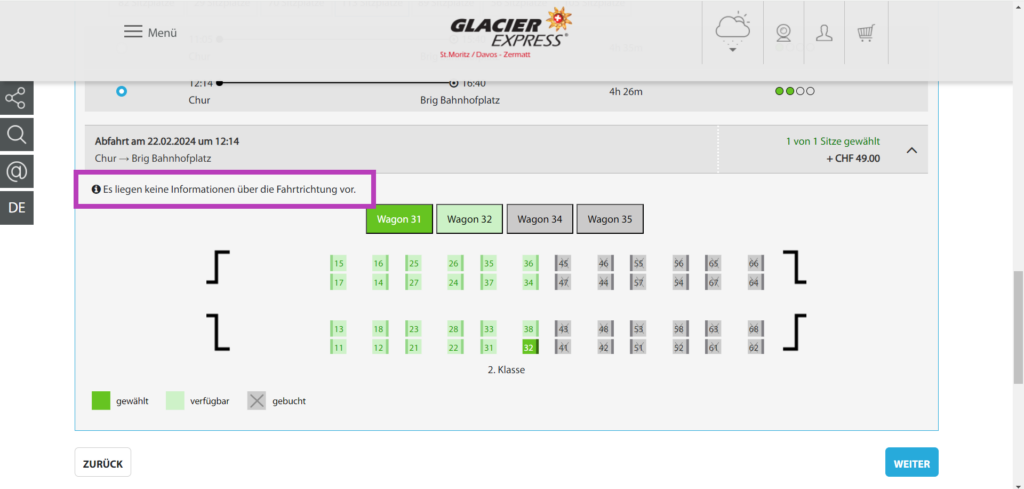
In the next step, you can see the option to upload discounts. For example, I had a “Tageskarte zu Halbtax-Abo” (Day-Pass to Half-Fare Card – I bought mine about 3 weeks in advance via the SBB app), and someone has purchased a Swiss Travel Pass. Kids under 6 get a free ride but still have to have a paid reservation. So the moment I selected my discount, the site automatically recalculated the price, i.e., it only showed me the reservation cost. Then, in the next step, you can order food from the menu (more on that later).
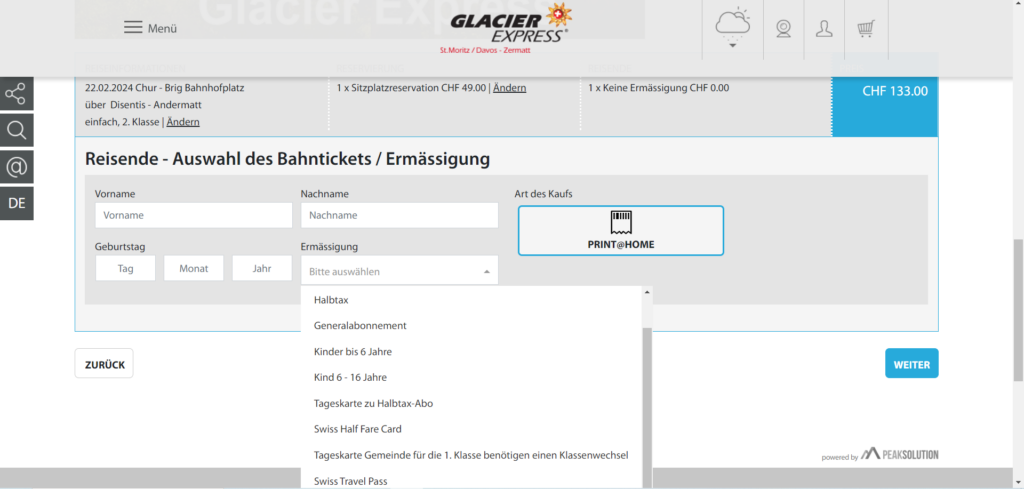
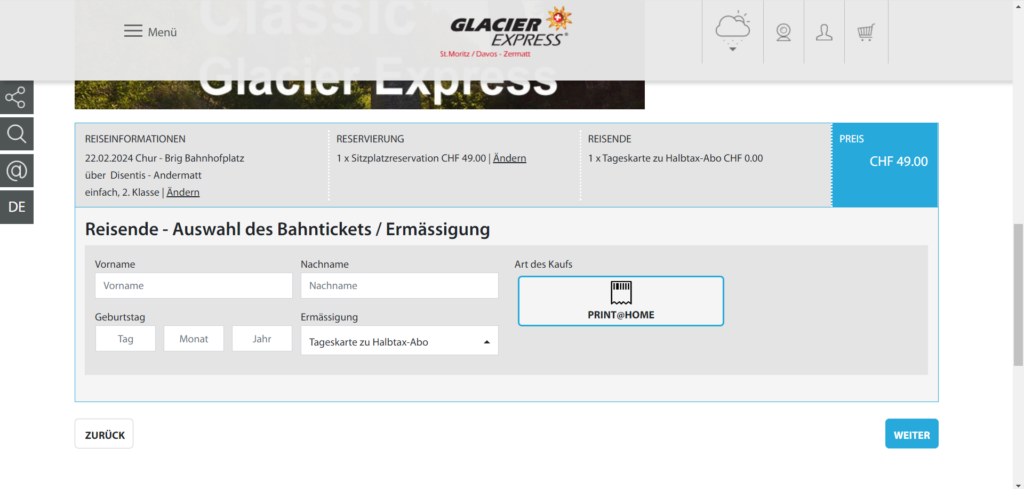
After filling in the necessary personal details and discounts, clicking through, and paying, I received my booking confirmation in the e-mail. I also paid for the additional insurance, just in case. It’s 1,72 CHF extra, but you never know what can happen. Attached to the email, all the way down the last page is your reservation with the QR code that the conductor on the train will ask you for. So, all that’s left to do is get on the train!
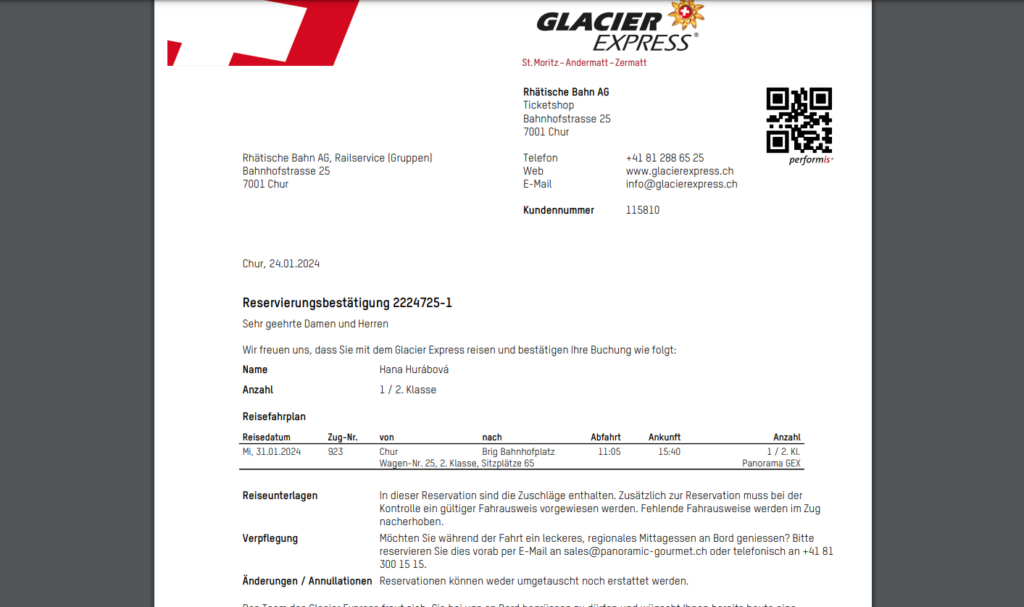
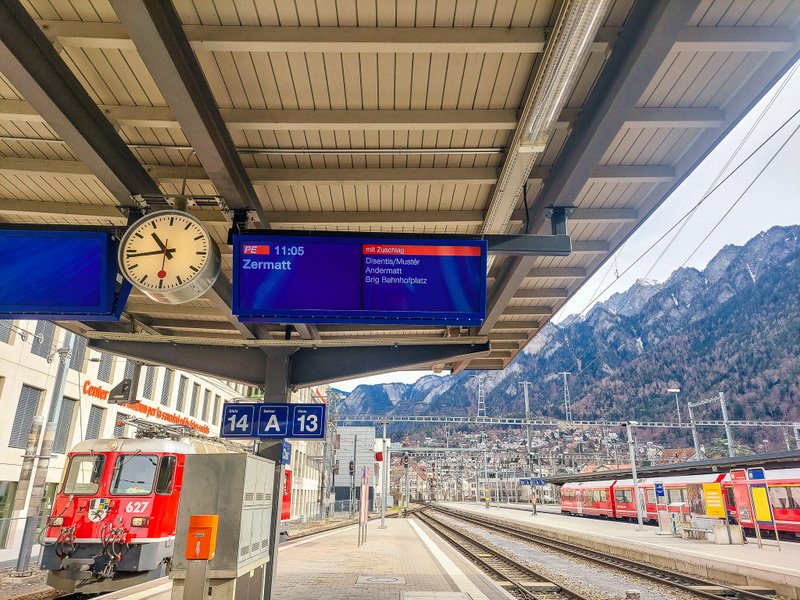
My route from Chur to Brig
Because of my schedule and the connections, and because I had taken the Chur – St. Moritz route by local train the day before (more about it in this blog post), I chose Chur – Brig. The train leaves Chur at 11:05 and is in Brig at 15:40. If you select this section, you miss the experience of crossing the famous Landwasser viaduct and twisting the Albula line.
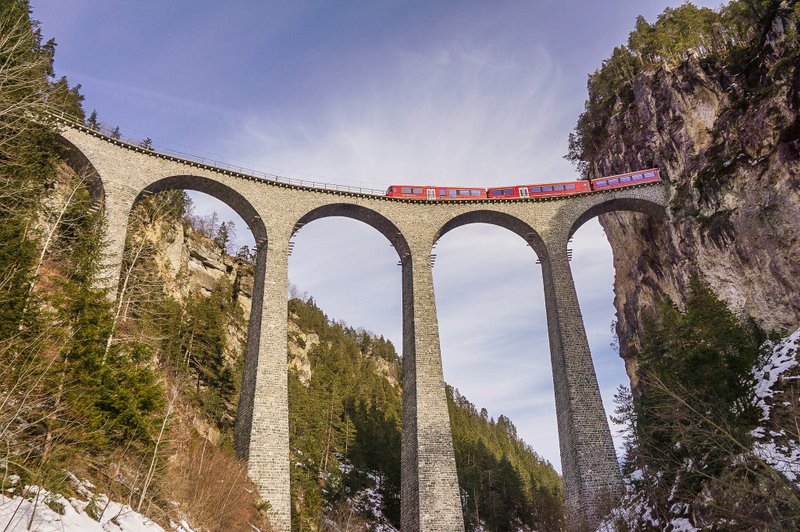
But you won’t miss the magnificent passage along the Rhine River – Switzerland’s “Grand Canyon” with its stunning rock formations, nor the passage through the village of Disentis/Mustér, the largest Romanesque-speaking community in Switzerland, dominated by a monastery that is the oldest Benedictine abbey in Switzerland.
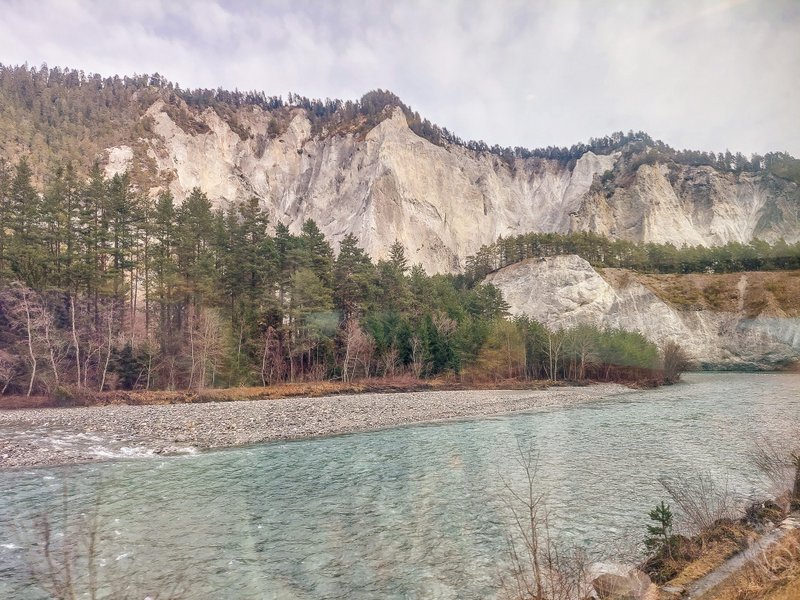
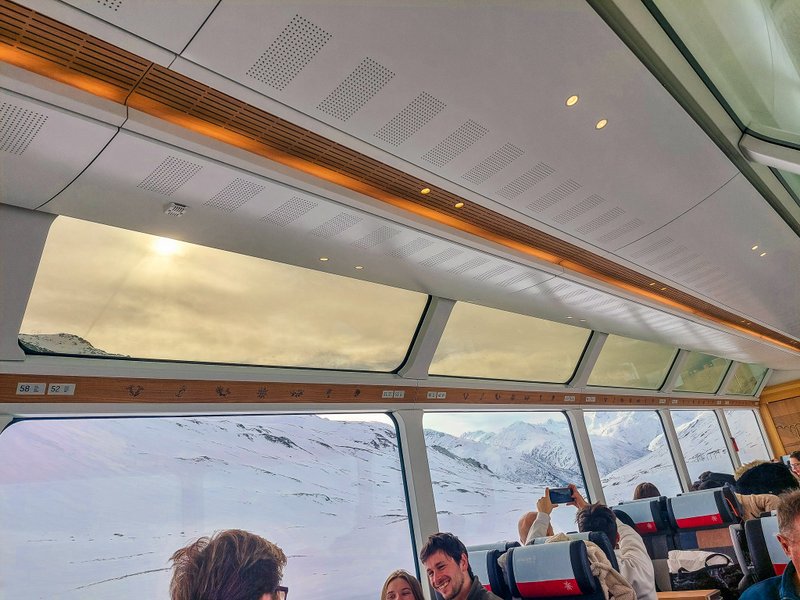
You will ascend to the Oberalppass and descend to Andermatt, which was founded by the Walsers – descendants of German (Alemannic) colonists from Upper Wallis, who settled in the 13th to 15th centuries in the high alpine areas of Switzerland (cantons Wallis, Graubünden, partly Ticino). They built typical houses made of larch wood, which turned black due to the sun’s rays. You will pass through the 15.4 km long Furka tunnel and then the broad valley of the Rhone River with the cross-country skiing mecca, the town of Goms. My route ended in Brig, the center of the German-speaking region of the canton of Wallis. The town experienced a glittering boom when it became the center of trade between France and Lombardy, thanks to entrepreneur Kaspar von Stockalper.
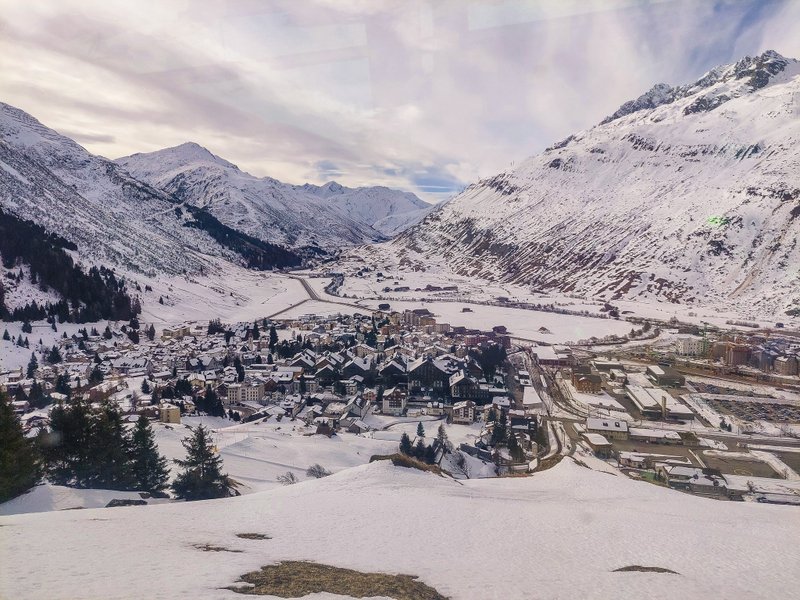
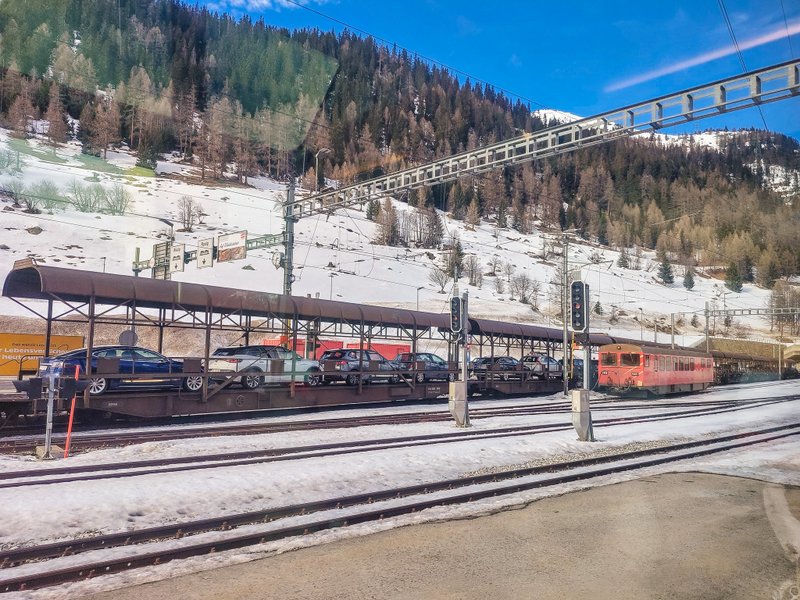
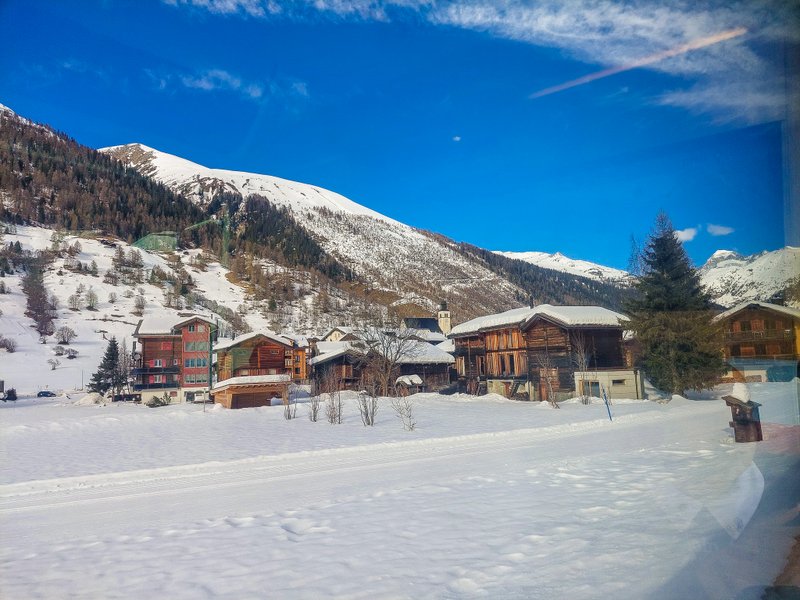
As you can probably guess, I don’t have all this information from my head, but I learned it through the informative talk from the headphones you find by your seat after boarding. Whenever there is a sound tone on the train, exciting information comes out of the headphones; tune in to the channel with the language you want to listen to the information in – German on channel 1, English on channel 2, and so it goes on to Chinese. On channels 7 and 8, you can listen to Swiss music – on 7 “folk” and 8 popular music in Mundart, the Swiss dialect.
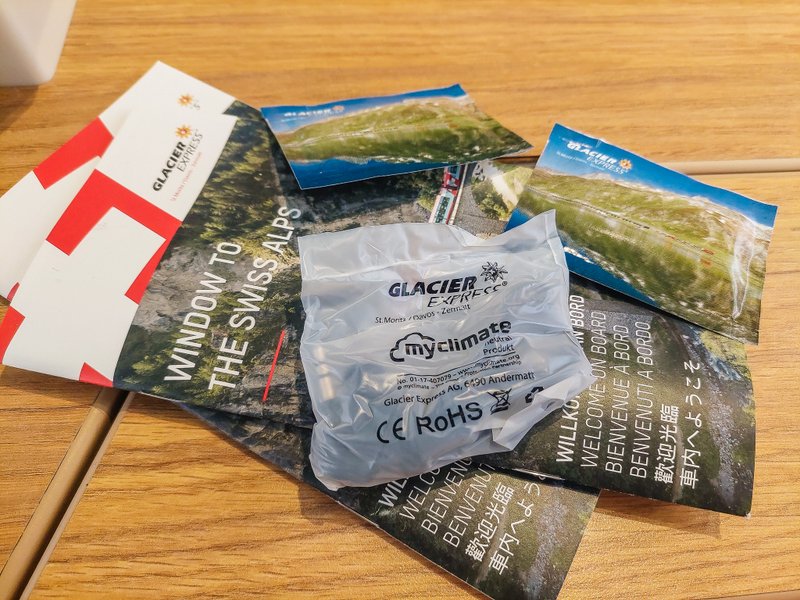
Food on the Glacier Express
You don’t have to worry that if you don’t book right away when you reserve your seat on the train, nothing won’t be left for you. You can order food from the menu on the table at any time during your journey. If you’ve already ordered your meal online, you’ll have a set table waiting for you when you board the train. However, you can bring your food and drink onto the Glacier Express.
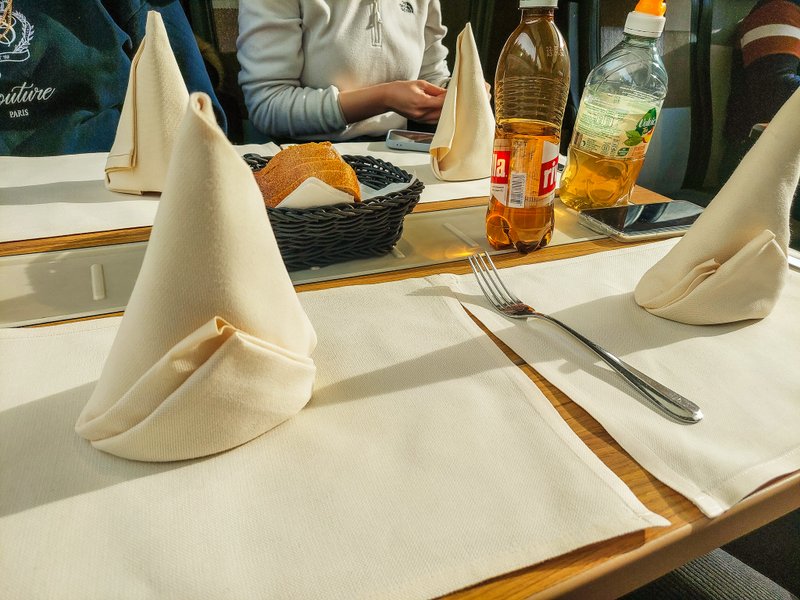
Shortly after boarding in Chur, the stewards started asking us what we would like for lunch. It’s like a fancy restaurant on the rails, but the prices are pretty reasonable. I only ordered soup – it was delicious, a traditional Bündner Gerstensuppe. The food started being served around 11:30. During the trip, the stewards kept asking if we needed anything, coffee or dessert, so I couldn’t resist the chocolate cake. You don’t pay for the food immediately, but when you approach Brig, the stewards walk through the aisles with the cash register. You can pay with cash or a card.
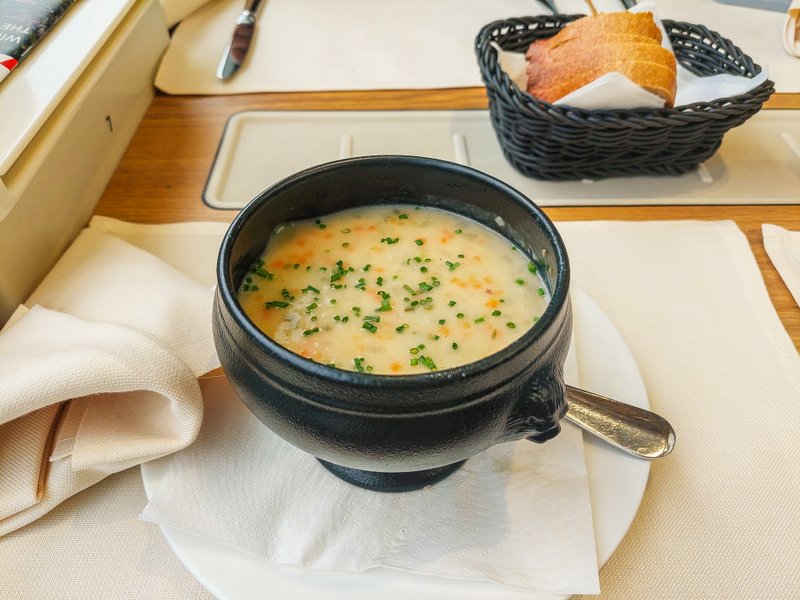
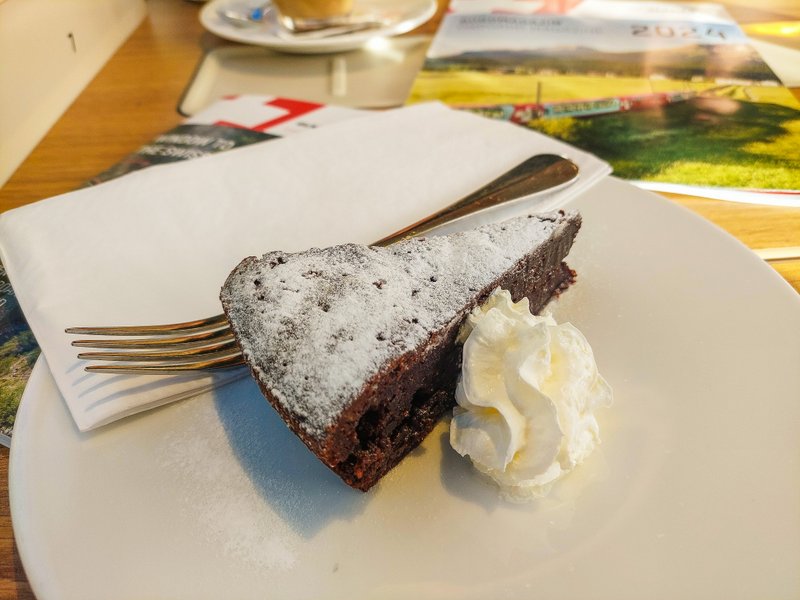
What to do with your luggage on Glacier Express?
If you’re traveling with large luggage, you don’t have to worry about bringing it on the train; there’s storage space. There is less storage space for handbags and other carry-on luggage. On “normal” trains, you have shelves to put smaller luggage over your head, which is missing due to the large panoramic windows. So there’s no choice but to tuck them under the seat. There are also no hooks for coats next to the window, as usual, but you can hang them nicely on a hanger in the corridor between the carriages.
My impressions
Riding the Glacier Express is an experience. But for me, it was enough to experience it once to know what it’s all about, but I don’t think I need to go again. Even though I only rode for less than five hours, the ride felt long by the end, and I was getting sick of sitting in the opposite direction, compounded by the lack of fresh air. For this reason, I probably wouldn’t recommend the ride for families with more minor children (unless they are train enthusiasts). What the ride can’t be denied, however, are the panoramas, of course. I don’t know if I was more enchanted by the rock gorges in the Rhine Valley or the vast mountain ranges. Moreover, thanks to this trip, I’ve picked many other places I’d like to visit.
What about you? Have you ever taken the Glacier Express? What was the experience like for you? Write to me!
